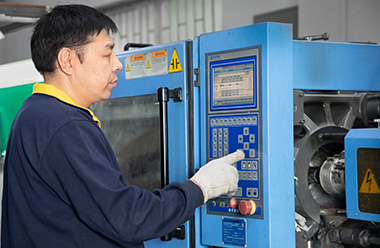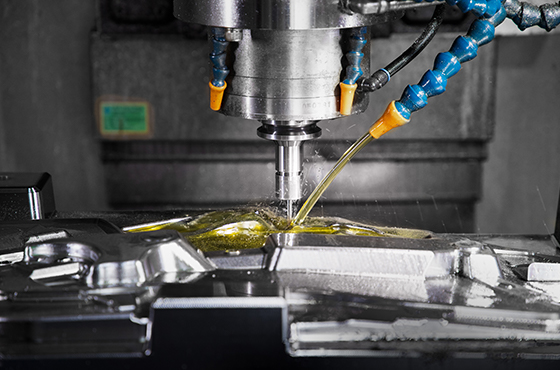Definition of Injection Molding
Injection molding is a manufacturing process that produces intricate and precise parts by injecting molten material into a mold cavity at high pressure. It is widely employed for mass production of plastic components due to its efficiency and versatility.
Overview of the Injection Molding Process
The injection molding process begins with melting raw material, usually thermoplastics, in a heated barrel. The molten material is then injected into a mold cavity under high pressure, where it solidifies to form the desired shape. Once cooled, the mold opens, and the finished part is ejected, ready for further processing or assembly.
Importance of Injection Molding Products
Injection molding products play a crucial role in various industries due to their numerous advantages, including cost-effectiveness, high precision, and versatility in design and customization. From automotive components to medical devices, injection molding has become indispensable in modern manufacturing.
Advantages of Injection Molding Products
1. Cost-effectiveness:
Injection molding offers a highly cost-effective solution for producing high-quality parts, particularly in large volumes. The process’s efficiency in creating complex shapes in a single operation helps reduce labor and material costs, making it a preferred choice for mass-production projects.
2. High Precision and Accuracy:
One of the critical advantages of injection molding is its ability to deliver exceptional precision and accuracy in the manufactured parts. The process ensures tight tolerances, excellent repeatability, consistent part quality, and dimensional accuracy. This level of precision is particularly crucial in industries such as aerospace and medicine, where reliability and performance standards are stringent.
3. Versatility in Design and Customization:
Injection molding offers unparalleled versatility in design and customization. Manufacturers can create intricate designs and incorporate features such as multi-cavity molds and insert molding to meet specific requirements. This flexibility allows for the production of unique products tailored to precise specifications, enhancing functionality and aesthetics.
4. Rapid Production Cycle:
Injection molding boasts a rapid production cycle, enabling quick turnaround times from design to finished product. The process involves minimal setup time, and production can proceed swiftly and efficiently once the molds are in place. This rapid production capability is advantageous for meeting tight deadlines and responding promptly to market demands.
5. Material Variety:
Injection molding supports various materials, including thermoplastics, thermosets, elastomers, and composites. Manufacturers can choose from an extensive selection of materials with varying properties such as strength, flexibility, and heat resistance, allowing for versatile applications across different industries.
Common Applications of Injection Molding Products
Automotive Industry:
Injection molding is pivotal in the automotive sector, where it manufactures exterior components. From sleek dashboards to robust bumpers and door panels, injection molding delivers lightweight, durable parts that enhance fuel efficiency and vehicle safety.
Medical Devices:
In medicine, injection molding technology is indispensable for producing precise and sterile components essential for various medical devices. These include syringes, IV connectors, and surgical instruments. The biocompatibility of specific materials ensures compliance with rigorous regulatory standards, making injection-molded medical components safe and reliable for patient use.
Consumer Goods:
Injection molding caters to diverse consumer products, ranging from everyday household appliances to cutting-edge electronic gadgets. Whether it’s stylish kitchenware, innovative toys, or sleek electronic enclosures, injection molding offers a cost-effective solution with a fast production cycle that meets the dynamic demands of the consumer market.
Electronics:
In the electronics industry, injection molding is instrumental in manufacturing casings, connectors, and enclosures for various electronic devices. This process enables the production of intricate geometries with impeccable surface finish, ensuring both functionality and aesthetics of electronic components. From smartphones to laptops, injection-molded parts play a vital role in the design and functionality of modern electronic devices.
Materials Used in Injection Molding
Thermoplastics
Thermoplastics are the most commonly used materials in injection molding due to their versatility and excellent properties. Some of the widely used thermoplastics include:
- Polypropylene (PP): Known for its lightweight nature, chemical resistance, and toughness, polypropylene is commonly used in various industries, including automotive, packaging, and consumer goods.
- Acrylonitrile Butadiene Styrene (ABS): ABS offers a balance of strength, impact resistance, and machinability, making it suitable for applications requiring durability and dimensional stability, such as consumer electronics and automotive components.
- Polycarbonate (PC): Polycarbonate is prized for its exceptional transparency, high impact resistance, and heat resistance, making it an ideal choice for optical lenses, safety goggles, and electronic housings.
Thermosetting Polymers
Thermosetting polymers undergo irreversible chemical reactions during molding, resulting in rigid and heat-resistant parts. Some common thermosetting polymers used in injection molding include:
- Epoxy Resins: Epoxy resins offer high mechanical strength, chemical resistance, and dimensional stability, making them suitable for applications in aerospace, electrical, and automotive industries.
- Phenolics: Phenolic resins exhibit excellent heat resistance, flame retardancy, and dimensional stability, making them ideal for manufacturing electrical components, appliance parts, and molded handles.
Elastomers
Elastomers are elastic polymers with rubber-like properties, flexibility, resilience, and compression set resistance. They find applications in various industries for sealing, damping, and vibration isolation. Standard elastomers used in injection molding include:
- Silicone: Silicone elastomers offer a wide operating temperature range, excellent weatherability, and biocompatibility, making them suitable for medical devices, food-grade applications, and automotive seals.
- Rubber Compounds: Rubber compounds, such as ethylene propylene diene monomer (EPDM) and styrene-butadiene rubber (SBR), provide excellent elasticity, abrasion resistance, and chemical resistance, making them ideal for gaskets, seals, and automotive components.

Design Considerations for Injection Molding
Wall Thickness
Maintaining uniform wall thickness throughout the part is crucial to prevent defects such as warping and sink marks. Designers should optimize wall thickness based on material properties and part geometry.
Draft Angles
Draft angles facilitate part ejection from the mold by allowing for smooth release without causing damage. Incorporating draft angles in the design minimizes the risk of sticking and improves moldability.
Undercuts
Undercuts are features that prevent straightforward part ejection and may require additional mold features, such as side actions or lifters, to facilitate demolding. Designers should consider undercuts carefully to avoid complex and costly mold designs.
Surface Finish
Surface finish impacts the aesthetics and functionality of injection molded parts. Designers can specify surface textures and finishes to achieve desired appearances and properties, such as glossiness, texture, and friction.
Quality Control in Injection Molding
Inspection Techniques
Various inspection techniques, including dimensional measurement, visual inspection, and non-destructive testing, ensure the quality and consistency of injection molded parts. Advanced metrology tools and automated systems enhance accuracy and efficiency in quality control.
Tolerance Management
Tolerance management is critical in injection molding to meet design specifications and functional requirements. Tight tolerances are achievable through process optimization, tooling adjustments, and statistical process control.
Defect Prevention Measures
Preventing defects in injection molding involves identifying root causes and implementing corrective actions throughout production. Strategies such as mold design optimization, material selection, and process monitoring minimize the risk of defects and ensure product quality.

Environmental Impact of Injection Molding
Sustainability Initiatives
The injection molding industry increasingly adopts sustainable practices to minimize environmental impact, including energy efficiency, waste reduction, and eco-friendly materials. Sustainability initiatives promote resource conservation and contribute to a greener future.
Recycling of Plastic Materials
Efforts to recycle plastic materials from injection molding processes help mitigate plastic waste and reduce landfill usage. Recycling programs and material recovery techniques support circular economy principles and promote resource efficiency.
Biodegradable Alternatives
Developing biodegradable materials offers a sustainable solution to conventional plastics in injection molding. Biopolymers derived from renewable sources, such as cornstarch and PLA, degrade naturally, reducing environmental pollution and conserving resources.
Future Trends in Injection Molding Technology
Additive Manufacturing Integration
Integrating additive manufacturing technologies, such as 3D printing, with injection molding processes enables rapid prototyping, tooling fabrication, and on-demand production. Hybrid manufacturing approaches combine the strengths of both techniques for enhanced efficiency and flexibility.
Industry 4.0 Advancements
Industry 4.0 technologies, including IoT sensors, AI-driven analytics, and robotics, revolutionize injection molding operations by optimizing process parameters, monitoring equipment performance, and enabling predictive maintenance. Smart factories enhance productivity, quality, and agility in manufacturing.
Sustainable Materials Development
Research and development efforts focus on sustainable materials for injection molding, such as bio-based polymers, recycled plastics, and biocomposites. Innovations in material science and processing techniques promote eco-friendly alternatives and address environmental concerns.
Conclusion
In conclusion, injection molding products are pivotal in modern manufacturing across diverse industries, offering cost-effective, precise, and versatile solutions to complex production challenges. From automotive components to medical devices, injection molding technology continues to drive innovation and shape the future of manufacturing.
FAQs
1. What Industries Commonly Use Injection Molding Products?
Injection molding products are widely used in automotive, medical, consumer goods, electronics, aerospace, and packaging industries.
2. Are Injection Molding Products Recyclable?
Yes, injection molding products made from recyclable materials can be recycled through various recycling programs and processes, contributing to resource conservation and waste reduction efforts.
3. How Does Injection Molding Compare to Other Manufacturing Processes?
Injection molding offers advantages such as high production speed, intricate part geometry, and cost-effectiveness compared to manufacturing processes like machining, casting, and extrusion.
4. What Factors Influence the Cost of Injection Molding Products?
Several factors influence the cost of injection molding products, including material selection, part complexity, mold design, production volume, and quality requirements.
5. What Are the Challenges Associated with Injection Molding?
Challenges in injection molding include part defects, tooling maintenance, material selection, process optimization, and environmental sustainability. Addressing these challenges requires expertise, innovation, and continuous improvement efforts.





